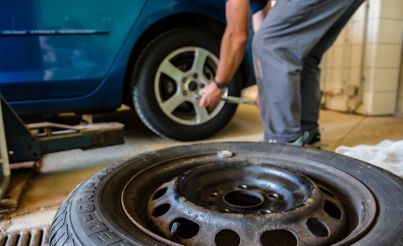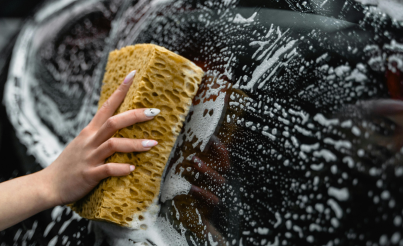The most important part of buying a car is the test drive - especially for the buyer. While you may be able to spot some problems and defects when inspecting the car and the engine compartment, most problems only come to light during the drive. With this test drive checklist, you won't miss a thing.
You are entitled to a test drive when you buy a car. It's important to take advantage of this opportunity to check for defects or other issues. After all, you don't want any unpleasant surprises after buying a car. But buying a car in Switzerland, and in some other countries, is a challenge, especially for the inexperienced. If you don't have a clue, you can easily get ripped off. That's why it's best to bring someone with you who knows something about cars.
Before the test drive
The test drive checklist contains items that need to be checked off before the drive begins. When buying a car, arrange a test drive in daylight. In dim light (e.g. at dusk), defects and damage can be more easily overlooked. If the weather is very bad, you should postpone the test drive. It is also advisable to arrange the test drive outside peak traffic hours.
Make sure that the route is as varied as possible. It makes sense to take a detour on the motorway to see how the car reacts to high revs. If this is not possible, at least use open roads outside built-up areas. A drive over bumpy roads can also be informative - for example, to hear whether something is rattling.
It is also important to clarify the insurance situation. Either take the salesman with you or have him certify in writing that you are released from liability for damages as a test driver.
During the test drive
Even if you are not familiar with cars, make sure you drive yourself during the test drive when buying a car. This is the only way to get a feel for the car and to find out whether the vehicle suits you, regardless of (technical) problems.
Points on the test drive checklist that you should definitely check: do the indicator lights light up? Do all instruments, on-board computers and infotainment systems work?
Also make sure that (seat) heating and ventilation are working. Are all windows and lights working?
Keep the radio off while driving so that you can identify suspicious noises more easily. Also make sure that you start the engine cold, this way you can hear if the timing chain rattles and notice if it starts quickly. It can tell you if the battery is weak.
Check whether the clutch is defective. Start the car in neutral and drive off in a high gear. If the engine does not stop, this is an indication of a problem.
Is the track correct? Let go of the steering wheel briefly (but only very briefly!) while driving and see if the car moves straight ahead.
Check the brakes! See how long it takes for the car to come to a complete stop under full braking. Does the car roll when you apply the handbrake on a slope?
After the test drive
When you come back from the test drive, you should check if there is any liquid dripping from the car. Is there a strange smell in the air? If it smells burnt, this could indicate a defective clutch. Has the engine temperature remained constant? Does the engine still run smoothly and can it be restarted easily? In addition to these general points on the test drive checklist, many models have their own weak points. Be sure to check these out before you buy a car in Switzerland and make sure that the vehicle is not affected by them.
Test drive with Carvolution
If you would like to drive your Carvolution car on a subscription basis, you can of course arrange a test drive. Just come by our office in Bannwil. There you can see all the cars we currently have in stock. Your new car on subscription is a new or as-new vehicle. Therefore, you don't have to listen for anything rattling in terms of age. You can just concentrate on whether your new car suits you.
SUPER SALE
Benefit from the super price of the Seat Ibiza Style from just CHF 216.- per month and get an additional 2'000 kilometres for free. Request a non-binding offer now!










